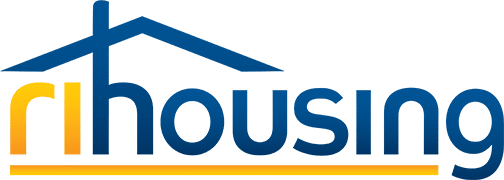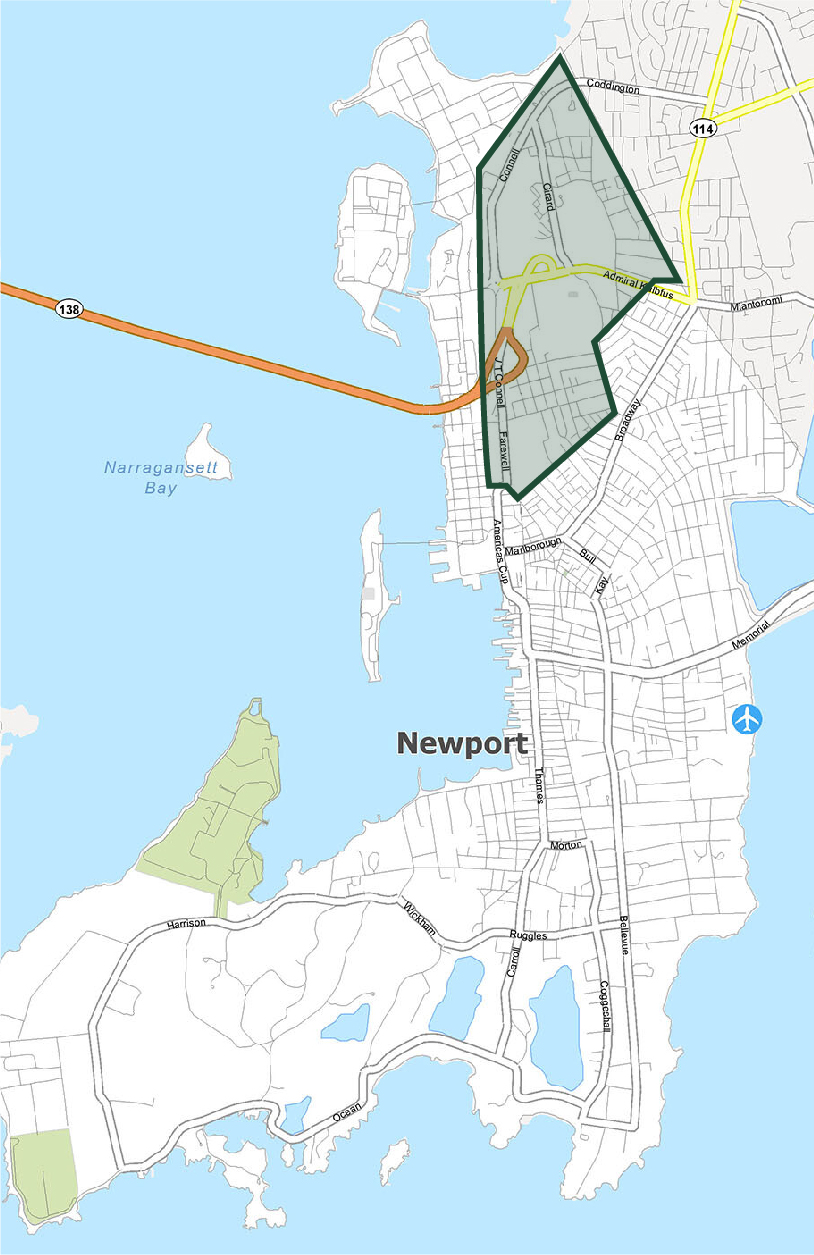Municipal Technical Assistance Program: Templates and Resources
RIHousing has created a set of documents with the goal of helping municipalities bring their local ordinances and regulations into conformance with the new zoning and planning requirements established by recently passed legislation.
Municipal Technical Assistance Program (MTAP) > Templates and Resources
Last Updated: 11.07.2023
In 2023, the General Assembly adopted a package of bills which made changes to various aspects of zoning, planning, and permitting statutes for the purposes of standardizing and streamlining the development process and otherwise reducing barriers to housing development. To assist Rhode Island municipalities in implementing these statutory changes, RIHousing has created a series of guidance documents and template materials to guide municipal officials as they update local land use, permitting and zoning enforceable policies (e.g., zoning ordinances and subdivision regulations). The templates and other resources should only be used in consultation with a municipality’s solicitor to ensure that they are used appropriately within the local regulatory framework.
Introduction and Summary of Guidance Documents
The General Assembly adopted the new requirements through ten bills, which made changes to various aspects of zoning, planning, and permitting statutes for the purposes of standardizing and streamlining the development process and otherwise reducing barriers to housing development. Those bills are described briefly in the text below, along with their effective dates, and can be accessed by clicking on the hyperlinks provided in blue. A more detailed summary of each bill is provided in the Bill Summaries document.
- H6058A/S1051A: Increases the amount of allowable units per acre for all projects subject to inclusionary zoning as well as other incentives and subsidies to offset differential costs of affordable units. Effective date: January 1, 2024
- H6059A/S1032A: Amends certain general laws relative to zoning ordinance and variances, special use permits, modifications thereto and also amends provisions relative to substandard lots of record and the merger of such lots. Effective date: January 1, 2024
- H6060A/S1053A: Establishes a land use court within the superior court. Effective date: January 1, 2024
- H6061Aaa/S1034A: Amends the provisions relative to the subdivision of land and the application process requesting relief from zoning ordinances and the review process thereof. Effective date: January 1, 2024
- H6081A/S1037A: Provides amendments relative to low- and moderate- income housing and modifies and clarifies the procedure for review of applications to build such housing. Effective date: January 1, 2024
- H6083A/S1050A: Amends several sections of law relating to low-and moderate-income housing and the application, appeal, and judicial review process. Effective date: upon passage
- H6084B/S1052A: Creates the transit-oriented development pilot program to encourage residential housing near convenient public transportation. Effective date: January 1, 2024.
- H6085A/S1033A: Amends the required contents of a comprehensive plan, providing that the “implementation program” component of the requirements include a strategic plan to ensure that the comprehensive plan goals and policies are implemented in a timely fashion. Effective date: March 1, 2024
- H6086A/S1038A: Amends certain notification procedures relating to comprehensive planning and land use, subdivision of land and zoning ordinances. Effective date: upon passage
- H6090A/S1035A: Provides that adaptive reuse for the conversion of commercial property into residential or mixed-use developments shall be a permitted use and allowable by specific and objective provisions of a zoning ordinance, subject to certain restrictions. Effective date: January 1, 2024
Bill Summaries
The Bill Summaries document provides an overview of each of the bills that resulted in required changes to various statutes. The bill numbers, effective date, brief bill summary, and key changes are outlined for each bill.
Legislative Language Summary Table
Several of the bills have sections of the local regulatory framework that will need to be cut and pasted from state law. These tables attempt to provide those instances where no tailoring of the enabling language is needed prior to adopting the language into the local regulatory framework. These tables are designed to be used in conjunction with the associated templates. Language that required adjustment for insertion into the local regulatory framework is contained in the associated templates, along with the language for direct insertion. The legislative language summary tables should not be used without the associated templates that are identified in the light orange boxes within and at the end of each table.
Best Practices and Examples
As part of the development of the regulatory templates, research was conducted to look at best practices and examples both nationwide and locally. This provided examples of how municipalities are already addressing similar issues. As part of the guidance provided to municipalities, there are best practices and example resources for subdivision, zoning, inclusionary zoning, comprehensive permits, and adaptive reuse. These best practices and examples should be used as a resource to learn more about a topic area. Any information gathered from them should only be used in consultation with a municipality’s solicitor to ensure that the information is utilized in a manner consistent with Rhode Island General Law.
Model Regulatory Templates
Included in the guidance documents are templates of model regulatory text, which are intended to be adapted and tailored by the municipalities into their local enforceable policy as appropriate. The templates are color coded and annotated to simplify their use as follows:
- Template language in red is either directly from state law or has been adapted directly from state law for insertion into the local regulatory framework and should not be altered. Text in black is supporting text or suggested text from best practices and examples for consideration by the municipality.
- Footnotes are used to reference sections of general law or call the reader’s attention to specific and important information. These templates should not be used without direct consultation of all of the associated footnotes.
- All footnoted references refer to the amended legislation that was approved during the 2023 General Assembly session but is not yet enacted in state law.
- In some cases, an inconsistency was identified in the general law during the process of drafting the templates. The template uses black text, within sections of red text, and a footnote, to identify sections where it was likely intended for language to be inserted or represented differently, but without a change to the enabling legislation, the text represented in black could be interpreted to be inconsistent with state law. In most of these circumstances the use of the exact text from the enabling legislation would be incorrect or inconsistent. In all of these cases, municipalities should consult with their solicitor for specific guidance.
- In some cases, the templates include bracketed text. Bracketed text signals the need for a municipality to provide the proper name of a local body, such as the planning board, or to add in a reference to a local regulatory section number or name. Some templates include internal references, that are bracketed, to sections within the model. These are represented with the model template section numbers and will need to be updated with local section references once drafted for insertion into the local regulatory framework.
- The regulatory templates have been drafted to represent the minimum requirements necessary to update the land development regulations and zoning ordinance for compliance with the changes to the enabling legislation. Each municipality may have a different approach and organizational style to the regulatory documents. The templates can be used in whole, or in part, with the understanding that the language represented in red is required for compliance. Municipalities will need to determine where these current sections exist in their regulatory documents and determine how best to use the model template to amend each relevant section. There are policy considerations that need to be addressed in some circumstances. The templates attempt to identify these sections through footnotes and bracketed text where the municipality can make a determination about a certain provision. An example of this is deciding who the permitting authority is for minor final subdivisions and land development applications. The law provides that either the administrative officer or the technical review committee can be the permitting authority in this instance. When using such language from the template, the municipality will need to make a policy determination and draft their tailored language accordingly.
- The templates should only be used in consultation with a municipality’s solicitor to ensure that the tailored and directly inserted language is used appropriately and in the correct location within each regulatory framework. These regulatory templates are not intended to be used as a direct cut and paste in all circumstances and municipal solicitors should be carefully consulted as to how the local regulations and ordinances are amended.
Guidance Documents
Land Development Projects and Subdivisions
Templates
- Subdivision Regulations Definitions
- Subdivisions Regulations General Provisions
- Subdivision Regulations Major Land Development Project
- Subdivision Regulations Minor Land Development Project
- Subdivision Regulations Notice and Hearing
Best Practices
Checklists
Flow Charts
- Major Land Development and Subdivision Review Flow Chart
- Minor Land Development and Subdivision Review Flow Chart
Informational Videos
Development Plan Review
Templates
Best Practices
Checklists
Flow Charts
Informational Video
Unified Development Review
Templates
Best Practices
Adaptive Reuse
Appeals
Templates
Best Practices
Comprehensive Permit
Templates
Best Practices
Flow Charts
Informational Video
Technical Review Committee
Templates
Modifications, Variances and Special Uses
Inclusionary Zoning
CONTACT
Stacy Wasserman
swasserman@rihousing.com
401-457-1242

